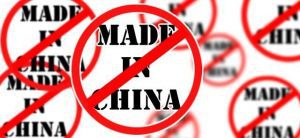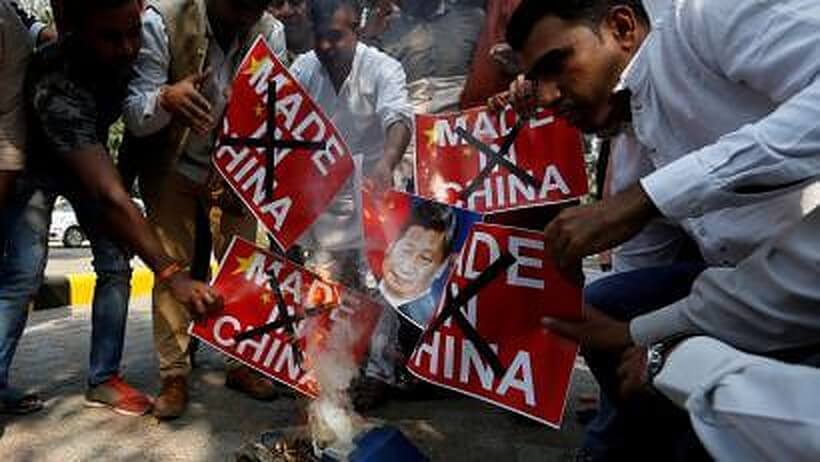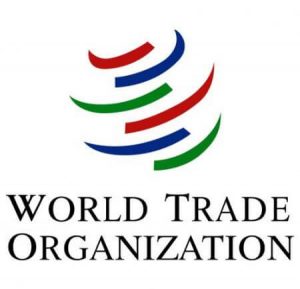Reading Time: 5 minutes
Boycotting Chinese goods is easier said than done. The bilateral trade compulsions are far more complex, explains Shyamal. An exclusive for Different Truths.
The concept of boycott as a tool during Indian nationalist movement and a unique salvo against uses, purchases, sales or storing of the foreign items or goods and accessories particularly of the British origin or label came into the fore during July 1905 when Lord Curzon decided to bifurcate Bengal with the obstinate statement – it’s a settled fact. During October, when the partition was to be effective, at the call of Rabindranath Tagore, a unity movement started through Raksha Bandhan but simultaneously and instantaneously a bigger protest to boycott and to burn any and every British origin or labelled clothes, books, items of fancy merchandises and toiletries etc., gained momentum with public support not only in Bengal but spread across the country. The Boycott Movement culminated into a spirit of the self, national pride with self-reliance onto making business and manufacturing initiatives by our countrymen.
The Boycott Movement culminated into a spirit of the self, national pride with self–reliance onto making business and manufacturing initiatives by our countrymen.
We must keep in mind it was the pre-independence era when the country was fully dependant on Great Britain and its European allies for most of the principal

necessary goods and items. Besides agriculture, the country had no significant manufacturing or industrial activities owned and promoted by the Indians. As a British colony, entire trade and commerce of the country used to be guided to the benefit and earnings of the ruling authority and their country. Farmers were forced and exploited to produce items required in the ‘Home’ (Britain) and its manufacturing units and the industrial output marketed and sold to the Indians.
On the hindsight of Boycott action, indomitable national spirits to set up and manufacture solely Indian i.e., by and for the countrymen enterprises took shape slowly but steadily. Unless the country could produce swadeshi substitutes, the very purpose of the foregoing foreign goods would in due course be defeated. The beginning of an era of Indian manufacturing initiated with setting up of Bengal Chemical & Pharmaceuticals, TVS, Banks, Tata Steels, Bajajs, Birla Bros., and so on. At the same time, the industrial revolution in the west on the move, the Indian newfound industrial initiatives received a boost.
All countries would love to be self-reliant and to promote their trade interest — India is no exception. But international trade is managed with more economic and commercial needs, leverage and political interest where sentimental nationalism is very weak to matter.
All countries would love to be self-reliant and to promote their trade interest — India is no exception. But international trade is managed with more economic and commercial needs, leverage and political interest where sentimental nationalism is very weak to matter. In theoretical words, comparative benefits of cost namely, raw material availability, superior technology, pricing and servicing and transportation logistics influence international trade mechanism.
In the current military escalation with China, as a fall out of the martyrdom of our soldiers at the front, our anger and anguish as a nation justifiably would preach to teach a lesson through the boycott of their goods or items sold in our markets. But containing emotions, the hard truth of international trade and its protocol would ask for a dispassionate evaluation of commercial advantages out of trade relations with China or for that matter with any other country.
As members of WTO, both India and China are obligated to its rules, articles and memorandums as in vogue to facilitate operations of mutual trade without any bar or sanctions prejudicial to WTO covenants.
For reference, India has been one of the founding members of GATT, since 1948, and later, a member of WTO, since 1995. China also joined WTO, in 2001, notwithstanding the continuous blockade by U.S.A for long. As members of WTO, both India and China are obligated to its rules, articles and memorandums as in vogue to facilitate operations of mutual trade without any bar or sanctions prejudicial to WTO covenants.
Let us look to trade scenario between Cuba and U.S.A – the two-nation fiercely opponents to each other politically, ideologically and strategically alignment wise. Despite the U.S.A having imposed embargo and sanctions along with military threats to Cuba (as per latest available trade data of the U.S census bureau) exports to Cuba for four months till April 2020 at $ 60 million and imports at $ 3`5 million; corresponding figures during the whole of 2019 had been$ 286 million and $ 3 million. Naturally, commercial commitments are not subservient to political compulsions in bilateral trade relations. Similarly, with no official data and amidst vociferous denials, covert trade exchanges have been in existence between Israel and Arab kingdoms. Even with heightened adversities, except brief pauses, trade contacts continued with Pakistan.
Fundamentally, trade relations being based on mutual benefits and comparative vantage do continue in the face of political or military aggressiveness so long an embargo or sanction is imposed. As per data on the website of the Indian embassy, Beijing, during 2019 ( till Nov) our exports to China were $ 16`32 bn but our imports were$ 54`24 bn, resulting in deficit balance at $ 37`83 bn.
Fundamentally, trade relations being based on mutual benefits and comparative vantage do continue in the face of political or military aggressiveness so long an embargo or sanction is imposed. As per data on the website of the Indian embassy, Beijing, during 2019 ( till Nov) our exports to China were $ 16`32 bn but our imports were$ 54`24 bn, resulting in deficit balance at $ 37`83 bn. Our exports were ores, precious stones, metals, cotton and organic chemicals. Our imports contained electrical machinery, electronics equipment, boilers, mechanical equipment, plastics articles and nuclear reactors. The Indian companies operating in China are Dr Reddys, Arvind Pharma, Bharat Forge, Reliance (now in litigation), Sundaram, Mahindra, and Tata Sons. More than 100 Chinese companies opened offices in India, who are working in the power sector and infrastructure construction, including metro transit and electronics.
Our basic drugs used in pharmaceuticals are nearly 70% from China, our mobile sets 50% from China, most of our antibiotics come from China apart from vitamin, cardiovascular drugs, our auto components are more than 20% from China. China supplies nearly 20% in steel sheet materials. As of late, a Chinese company STEC bagged a contract worth Rs. 1170 crore in Delhi- Meerut RRT and government of Maharashtra executed MOU with a Chinese firm for infra project. Expecting potential business improvements, state-run Bank of China acquired stakes in HDFC, a few days back. Alibaba of China has been holding major stakes in all leading E-Com & payments platforms.
With the outbreak of COVID, exports from China dropped by 12% so also imports from India by 11% million indicating not much impact on bilateral trade. To achieve our mission of Make in India, it is imperative to reset and revive our manufacturing sector, which has now been pushed around 14% of GDP, during 2019, further falling during the pandemic.
With the outbreak of COVID, exports from China dropped by 12% so also imports from India by 11% million indicating not much impact on bilateral trade. To achieve our mission of Make in India, it is imperative to reset and revive our manufacturing sector, which has now been pushed around 14% of GDP, during 2019, further falling during the pandemic. As per CII estimates, 12% of our labour force is employed in the organised manufacturing sector. China started to produce small and minor electronic, plastic, chemical, automobile equipment and spares and now grown into big industrial hub penetrating world market including India in every field of major industrial activities sharing nearly 30% of their GDP.
It is imperative to accept for our manufacturing sector with missionary zeal, the challenge against infiltration of Make in China goods with better quality, priced and easily available Make in India products. On a pragmatic scale, the thread to the success of China intruding every corner of the world with their goods and items lies on the bulk supply chain, low pricing, average quality and average durability compared to local supplies. Unless the spine of their business economics is made to paralyse with our local products, a call to boycott may sound patriotic but may not hit the bull.
The industrial sector also needs support from authorities, some of which may be in the pipeline of Make in India mission. World Bank ranked India 64 on ‘Ease of Doing Business’, whereas China stays at 31, despite ours is democratic. but China, a party regimented rule. On fundamentals, we need several reforms and reliefs in the manufacturing and labour arena to pull up the economy to withstand new challenges. History offers the opportunity to all, one who seizes it becomes glorious.
Photo from the Internet













